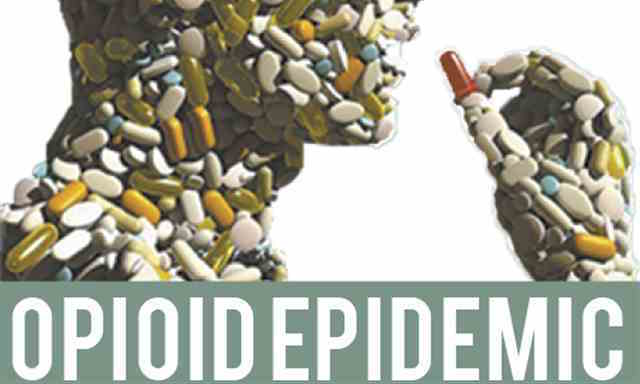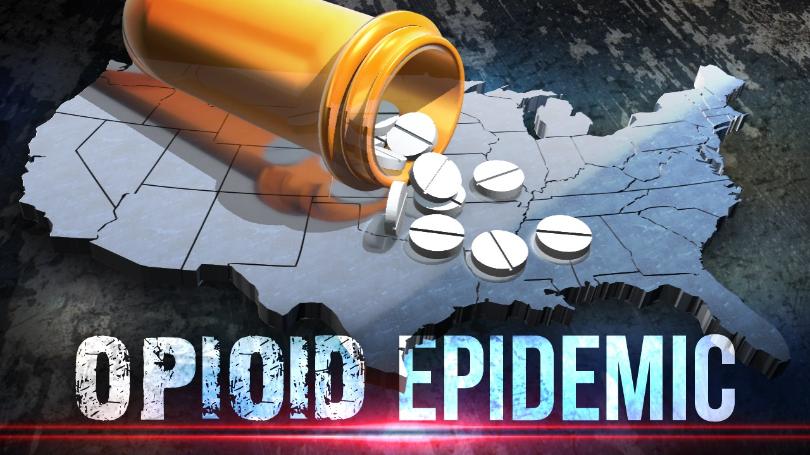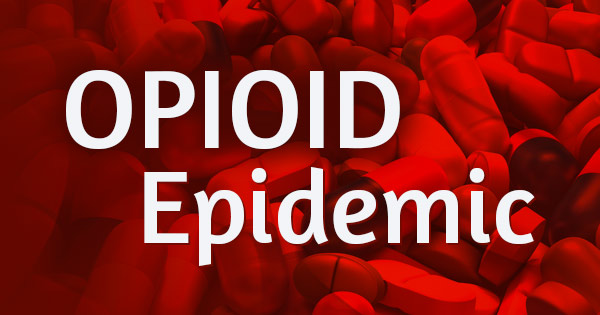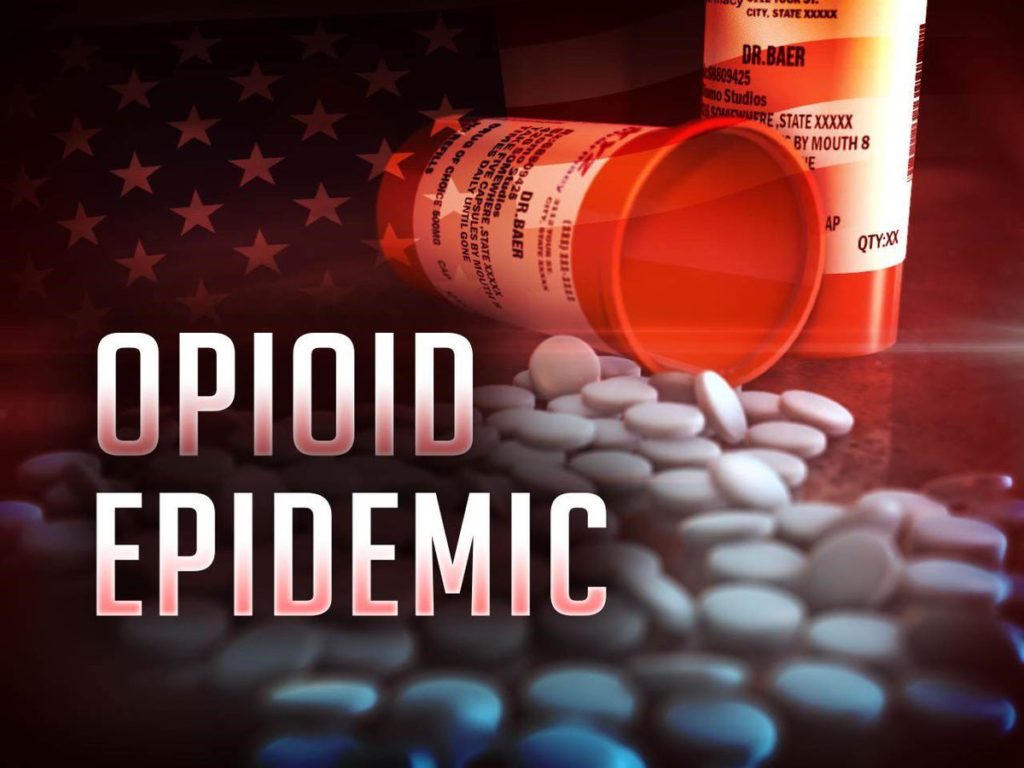The Patient Body
The Patient Body: Opioids: A Crisis of Misplaced Morality
“The Patient Body” is a monthly column by Ann Neumann about issues at the intersection of religion and medicine. This month: Painkillers and morality in US media and politics

“What does spirituality or morality or a good feeling toward others have to do with addiction? Zero. Addiction isn’t about that. Addiction is a psychological symptom to help you get through feelings of being overwhelmed.” —Dr. Lance Dodes, Boston Psychoanalytic Institute[1]
Heroin, hydrocodone, OxyContin, morphine, fentanyl. “Everyone keeps talking about awareness. We’re aware there is an opiate epidemic,” Jessica Hall, Director of Judicial Programs at The McShin Foundation, an addiction and recovery program in Henricho County, Virginia, told AOL News in July. There are more women in Henricho County’s jail than there have ever been.[2] “Where’s recovery at in this?” Hall asked.
Yes, we’re aware of the opioid epidemic. It’s been hard to miss in the media—or our personal lives—for the past decade. But there’s a kind of conundrum effect to our current reactions to the opioid crisis. Wade into studies and articles about the unprecedented rate of opioid overdoses in the country and you’re likely to come away confused about how drug epidemics happen and about how to stop what is killing so many right now across the nation.
Yes, people are dying in mass numbers; our prison, health care, education, financial, social support systems—and every other system you can think of—are overwhelmed. And no, nothing is being done. “There’s been a lack of policy action to end the opioid epidemic,” German Lopez wrote at Vox in August, “The only major bill passed by Congress on the crisis appropriated $1 billion to drug treatment over two years — far from the tens of billions a year that studies suggest the crisis actually costs.”

Trump stated on August 10 that he would address opioid addiction, but waited until the end of October to take any action. Trumps declaration of a public health emergency, rather than a national emergency, prevents the necessary funding and resources—trained people on the ground—from being committed to the epidemic.
“What we need is for the president to seek an appropriation from Congress, I believe in the billions, so that we can rapidly expand access for effective outpatient opioid addiction treatments,” Andrew Kolodny, the co-director of opioid policy research at the Heller School for Social Policy and Management at Brandeis University, told the New York Times after the president’s announcement. “Until those treatments are easier to access than heroin or fentanyl, overdose deaths will remain at record-high levels.”
What is clear from endless reporting is the horrifying starkness of the numbers. If nothing is done, half a million more people will die over the next decade. Morgues in Ohio are full. So are prisons in Virginia. Scores of people are dying of opioid withdrawal in jail. Distraught parents are using their children’s obituaries to speak out about opioid use. Children are flooding foster homes.
All of which also makes it clear that opioid addiction is a moral crisis. The moral part in this moral crisis, however, isn’t the habits and behaviors of those addicted or the sellers or makers of those drugs. It is our lack of moral action – our immoral inaction. It is the failure of our legislators to do the right thing, it is our misplaced moral judgment. It’s the application of the entrenched moralizing frame we use to talk about mass addiction: The frame which says that addicts have made bad decisions, have failed to get help, have failed to love themselves, to love God. The dominant perspective which claims that addicts have put their drug before all things, they have robbed their mother blind, they have lost their job, their wife, their kids and their dignity. The fact is, it is precisely because we have characterized addicts as immoral actors enslaved to evil substances—for, like, ever — that we’ve failed to prevent the destructive cycle of drug epidemics, past and present
***
When we do bother to address this moral crisis, we address it as a problem of national purity. I have written before about how our country uses laws regulating sexual purity to express anxieties about the condition of our nation-state, conflating them into stories we tell ourselves about national purity. To preserve the nation, we must be “pure” in all respects. It is especially important to mind the ways in which ideas about national purity carry a particular racially charged weight when applied to public health. Health care and other social support programs are under attack—not least because they serve minorities. The “Us and Them” narrative Trump—and his predecessors—have employed regarding “entitlements,” education, and immigration show that a growing faction of “us” define “American” by an ever-decreasing number of demographic traits: white, Christian, suburban or rural, in a hetero-nuclear family, gainfully employed, gun owning, healthy.
The number of “us” fitting this profile is vastly smaller than we imagine or publicly acknowledge. Yet, a nation can dream. So the American dream has been winnowed to the sole task of maintaining systemic white supremacy in our politics and our government. When Obamacare reasserted the government’s role in health care, efforts to redefine deserving Americans were reinvigorated.
Even those of “us” who live in (blue) cities are getting pushed out of the national family. Throughout the campaign, Trump used the term “inner city” to dogwhistle to MAGA Americans his racial, economic, political and religious exclusions.

Trump is no saint but his personal foibles are forgiven because he continues to pursue the religious right’s unforgiving agenda. The Trump administration and party are stacked with constituents who see poor health as a moral failing. Just last month, Betty Price, a Georgia State Representative and the wife of the former Secretary of Health and Human Services, Tom Price, felt comfortable enough to ask on videotape if quarantining people who are HIV positive was an option to address Atlanta’s high number of predominantly young, African American HIV patients. “It seems to me it’s almost frightening the number of people who are living that are potentially carriers, well they are carriers, with the potential to spread, whereas in the past they died more readily and then at that point they are not posing a risk,” she said.
Later, under national criticism, she walked back her comments. But the point remains clear: those who fall outside a strict definition of America are not worthy of protection or even basic human rights. (It’s worth noting, while we’re on the subject of morality, that Tom Price resigned from HHS after he was criticized for his exorbitant use of private jets for government work. Tax dollars are, apparently, only for the deserving, like Price.)
Our white Christian nation is under threat, so the narrative goes, from those brown, needy, gay drug users in the inner city. Price’s construction of Americanness is clear. She’s not asking how we care for ourselves and our public health, but how we protect “ourselves” from “them.” Yet, we should know from the past what happens when we let a nationalistic politics of purity and prejudice determine public health policy.
Race clearly played a role in the 1980s, when the term “crack baby” was coined. Vann R. Newkirk II wrote in the Atlantic in July, “‘Crack baby’ brings to mind hopeless, damaged children with birth defects and intellectual disabilities who would inevitably grow into criminals… unthinking black mothers who’d knowingly exposed their children to the ravages of cocaine.” Blame the addict, science and our politicians told us. “The term made brutes out of people of color who were living through wave after wave of what were then the deadliest drug epidemics in history,” Newkirk writes.
As On the Media’s Brooke Gladstone has noted, you can fix the date of the nation’s modern war on drugs to Nixon’s declaration in 1971, when he designated drug abuse as America’s enemy number one. The Nixon administration set the tone for future epidemics by using addiction to target and “disrupt” communities the administration saw as opponents.

As Nixon’s chief of domestic policy, John Erlichman, told writer Dan Baum, “We knew we couldn’t make it illegal to be either against the [Vietnam] war or black [sic], but by getting the public to associate the hippies with marijuana and blacks with heroin. And then criminalizing both heavily, we could disrupt those communities,” Ehrlichman said. “We could arrest their leaders, raid their homes, break up their meetings, and vilify them night after night on the evening news. Did we know we were lying about the drugs? Of course we did.”
Gladstone notes that subsequent administrations have all consistently spent more on enforcement than treatment. As a result, wrote the Chicago Tribune’s Dahleen Glanton in August, during the 1980’s crack epidemic, “Hundreds of thousands of African-Americans across the country ended up with prison records because of minor drug violations… a legacy that continues to contribute to the decay of poor, urban communities.”
Today, with the opioid epidemic, we see a stark contrast to the racialized and sexualized reactions during the crack and AIDS epidemics. According to a 2015 Kaiser Family Foundation study, 27,000 of the 33,000 who died from opioid overdose were white.
What’s different about today’s opioid epidemic is that, instead of blaming white people the way we blamed black people in the past, we’ve found ourselves a new devil: big Pharma. It took an epidemic striking the white Christian heartland for the dominant narrative to redirect blame and turn against, of all Republican-heralded things, profitable corporations.
In a recent blockbuster for Esquire magazine, Christopher Glazek went after the Sackler family, who amassed billions of dollars by manufacturing and selling OxyContin. In the piece, Glazek writes, attacking what he calls “the chronic pain movement”:
As the decade wore on, these organizations, which critics have characterized as front groups for the pharmaceutical industry, began pressuring health regulators to make pain “the fifth vital sign”—a number, measured on a subjective ten-point scale, to be asked and recorded at every doctor’s visit. As an internal strategy document put it, Purdue’s ambition was to “attach an emotional aspect to noncancer pain” so that doctors would feel pressure to “treat it more seriously and aggressively.” The company rebranded pain relief as a sacred right: a universal narcotic entitlement available not only to the terminally ill but to every American.
I have no interest in defending the Sacklers or the pharmaceutical industry; but jeopardizing the lives and health of pain sufferers to do so is a dark and immoral path for journalists and politicians. Not least because tighter restrictions on Pharma and doctors won’t solve the problem. In fact it’s already making it worse, and not just for those who legitimately need pain relief. Now that prescription pain medications are becoming scarcer, some addicts are going straight to heroin. Addiction is no more the product of easy-access pills than national impurity is the product of easy-access women.
The government’s crack down on prescription painkillers has dried up the surplus, but now doctors who fear the CDC’s strict new guidelines are cutting off patients with chronic pain. People are suffering. But we continue to turn a deaf ear to pain and suffering because our political system is still committed to the feeling of moral superiority that such judgment gives us. In September of last year I wrote about our nation’s already muted response to pain treatment, particularly in women. Suffering is a part of our national—and Christian—narrative: it makes us great, it teaches us lessons, brings us back to God and moral behavior. Which in turn should make our nation healthy, whole, and great again. Except it doesn’t.
***
Which brings us to last month’s fracas over Trump’s appointee for drug czar, Pennsylvania Representative Tom Marino. A Washington Post/60 Minutes report (subscription) fingered Marino for supporting the Ensuring Patient Access and Effective Drug Enforcement Act, passed under Obama. The report claims that the bill curtailed the DEA’s drug enforcement efforts and therefore “helped pump more painkillers into parts of the country that were already in the middle of the opioid crisis.”
Democrats were left to rail against Marino as soft on drug enforcement, never a good stance for them, however common. “I was horrified when I read the Washington Post piece and cannot believe the last administration did not sound the alarm on how harmful that bill would be for our efforts to effectively fight the opioid epidemic,” Senator Joe Manchin, a Democrat from West Virginia, said. Senator Claire McCaskill, a Democrat from Missouri, has promised to repeal the law, passed in 2016 under president Obama. (To the growing list of lessons the Democratic Party refuses to learn, add the debilitating and ineffectual impact of increased drug enforcement.)

The default, then, on how to address the opioid epidemic is the same as it ever was—with a twist: Increase DEA and drug enforcement power. The only difference this round is where the blame is placed; not on the predominantly white users, as black addicts had been blamed and penalized during the crack epidemic, but on pharmaceutical companies and doctors who manufacture and prescribe opioids. Nicholas Kristof’s recent New York Times column, “Drug Dealers in Lab Coats,” is a perfect case in reactionary point. He writes: “The opioid crisis unfolded because greedy people — Latin drug lords and American pharma executives alike — lost their humanity when they saw the astounding profits that could be made.”
However little sympathy doctors and Pharma deserve, like Manchin and McCaskill, Kristof is barking up the wrong tree. Here’s how Maia Szalavitz, a neuroscience journalist and author of The Unbroken Brain: Why Addiction is a Learning Disorder and Why it Matters, described Pharma’s role in the opioid crisis to me in an email exchange last month: the epidemic was originally driven by the “diversion” of liberally prescribed pain medication. Studies show that “70 percent of those who misuse these drugs were getting them from friends, family, dealers.” Pain patients weren’t misusing their liberally prescribed pain medications, they were letting them get into other peoples’ hands. Think, perhaps, of a grandfather who gets 75 “oxys” after surgery and takes only 3 of them; the rest are left on a shelf where an experimental teenage grandchild could easily find them. The problem isn’t the doctor, the grandfather, anyone’s morals, the pills, or even the company producing and advertising them: the problem is our willful misunderstanding and mistreatment of addiction.
“Most ‘addicted pain patients’ are people with a past or current history of addiction,” Szalavitz told me, “many of whom deliberately sought doctors for the purpose of getting drugs; others got re-addicted after having alcohol or other drug problems in their youth.” Szalavitz added that “90 percent of all addictions start with recreational use in the teens or early 20s.” Addiction will find a drug, whether its alcohol, crack, or opioids. It is a medical condition, one that requires and deserves medical treatment, not punishment, and certainly not self-righteous promises of redemption.
***
Addiction is the cause of opioid use, not personal character, not the drug, and not the drug maker or prescriber. “The real roots of addiction lie in child trauma, mental illness and despair and we’ve done nothing about them,” Maia Szalavitz told me. We’ve been getting this wrong for centuries.
Citing Szalavitz’s work in an article I wrote about Prince’s death for The Guardian in 2016, I wrote:
American history is rife with “drug panics,” from opium in the 1700s to alcohol in the early 1900s, from coke in the 1970s and crack in the late 80s to methamphetamines in the early aughts. From the beginning, the way that users have been viewed has affected drug regulation and treatment, often with disastrous results.
Those disastrous results are continued addiction epidemics. The drugs are ever changing, but the problem, as we address it, sadly remains the same: an issue of misplaced morality. We’d rather blame anything other than our own failure to address the causes of addiction. So we give moral jurisdiction to law enforcement, to drug makers, to Donald Trump, to God.
Church’s across the country are stepping up to support addicts, either by giving over their basements to AA and Al-Anon meetings or by giving over their pews to moral lessons for addicts. ” As Deborah Baker wrote at WBUR in April:
“The issue of spirituality and addiction treatment is complicated and controversial. The vast majority — by some estimates more than 85 percent — of substance use disorder treatment in the U.S. is based on the 12 steps. Among other things, the steps ask adherents to believe that a ‘power greater than ourselves can restore us to sanity.’”
Some faith leaders are realizing that support can’t come from a place of moral judgment. But the shaming of individual choice and the emphasis on “personal responsibility” that has long been applied to addiction often prevails. Baker observes Tom Thelan, a former Catholic priest who now runs a treatment center in Massachusetts, telling a group of recovering addicts, “‘In many of our groups we talk about: What is the purpose of our life? And I know it’s not to suffer and die miserable. Our purpose in life is literally to live a life of purpose. That is, in giving we receive. This addiction is the exact opposite — it’s all about getting for ourselves.’”
Yet, if addiction is a disease, why don’t we treat it as we do other diseases? With science rather than spiritualized self-help? As Szalavitz wrote at Huffington Post in March, there are two reasons: the existing mobilization of law enforcement against use and possession; and the prevalence of a spiritual and moral failing model of treatment and recovery. These are ineffectual approaches, yet we have no better solutions because most of the population still doesn’t see addiction as a medical problem. And thus addiction—wave after wave of heartbreaking drug epidemics—continues.
So, again we ask, just as Hall in Henricho County, Virginia, asked “Where is recovery at in all this?” Nowhere. In past drug epidemic iterations, the white, Christian, hetero powers-that-be had an easier time blaming the vicitms – the evils were starker thanks to differences in race and class. Today we’ve only managed to find a new and false cause. As long as we continue in this way, so too will addiction, regardless of the drug du jour or the race of the person addicted.
***
[1] http://www.wbur.org/commonhealth/2017/04/20/spirituality-religion-opioid-addiction-recovery
[2] Incarceration, it’s worth noting here, is not a method of treating addiction.
Past “The Patient Body” columns can be found here.
***
Ann Neumann is author of The Good Death: An Exploration of Dying in America (Beacon, 2016) and a visiting scholar at The Center for Religion and Media, NYU.
***
Published with support from the Henry R. Luce Initiative on Religion in International Affairs.